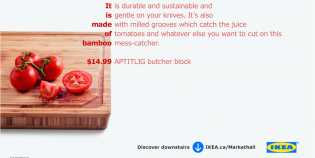The paywall is becoming both a roadblock and an opportunity, depending on where you stand. For consumers, being asked to pay for online content has not been an established practice online, so when companies such as The New York Times put up a paywall, it seems like an imposition. However, marketers are turning such developments into a chance to position themselves as a friend who can foot the bill. However, can providing such access cut into advertising budgets?
Last week, Volvo began offering free streamed baseball games to the millions of Americans who own Apple devices through a partnership with Major League Baseball’s advanced media division. For one month, the automaker is covering MLB fans’ $25 subscription fee for live game video, marking the first time MLB has offered free access to all its games.
The move comes just weeks after Ford Motor Co.’s Lincoln brand stepped in to offer free passes to 200,000 of the people most likely to encounter The New York Times‘ new digital paywall, opening up $150 worth of paid content. More recently, Microsoft has begun underwriting a month of Hulu Plus’s $7.99-a-month video service for people who downloaded the latest version of Internet Explorer.
While the moves may not be training consumers to open up wallets, they are encouraging sampling, bringing bigger ad dollars to publishers and, for brands, generating buzz and goodwill.
“Advertisers have been underwriting media for a very long time; this is just another way to engage with consumers,” said Connie Fontaine, manager of U.S. Lincoln marketing communications, which brokered the Times deal.
While commercial breaks have long brought us free broadcast TV, and ploys to increase magazine circulation to capture advertiser interest have lowered some subscription rates close to zero, recent examples of brands bankrolling paywalls makes that relationship between advertising and free content more obvious and overt – and that’s generating enormous goodwill. In Lincoln’s case, consumers have written to the automaker, expressing appreciation for the free subscriptions.
One woman went as far as to say she was now considering buying a Lincoln.
The gratitude comes at higher costs than standard ad buys. These deals are forcing advertisers to spend way more than they would have for just media – paywalls give digital content a high and hard cost that wasn’t previously reflected in measly cost-per-thousand calculations. With each user worth $25 or $150 in revenue, publishers can ask premiums to cover lost subscription revenue and branding. These deals aren’t done on a CPM basis, but as lump sums that exceed the usual digital media buy.
For Ken Doctor, media analyst for Outsell, it’s a return to a model prevalent in the 1950s and ’60s. “Those weren’t CPM buys; it was one sponsor responsible for one program. If sponsorship now is paying enough money to support journalism and creation, that’d be OK.”
Marketers believe the payoff is higher than the average ad buy.
To read the full article at Advertising Age, click here.










